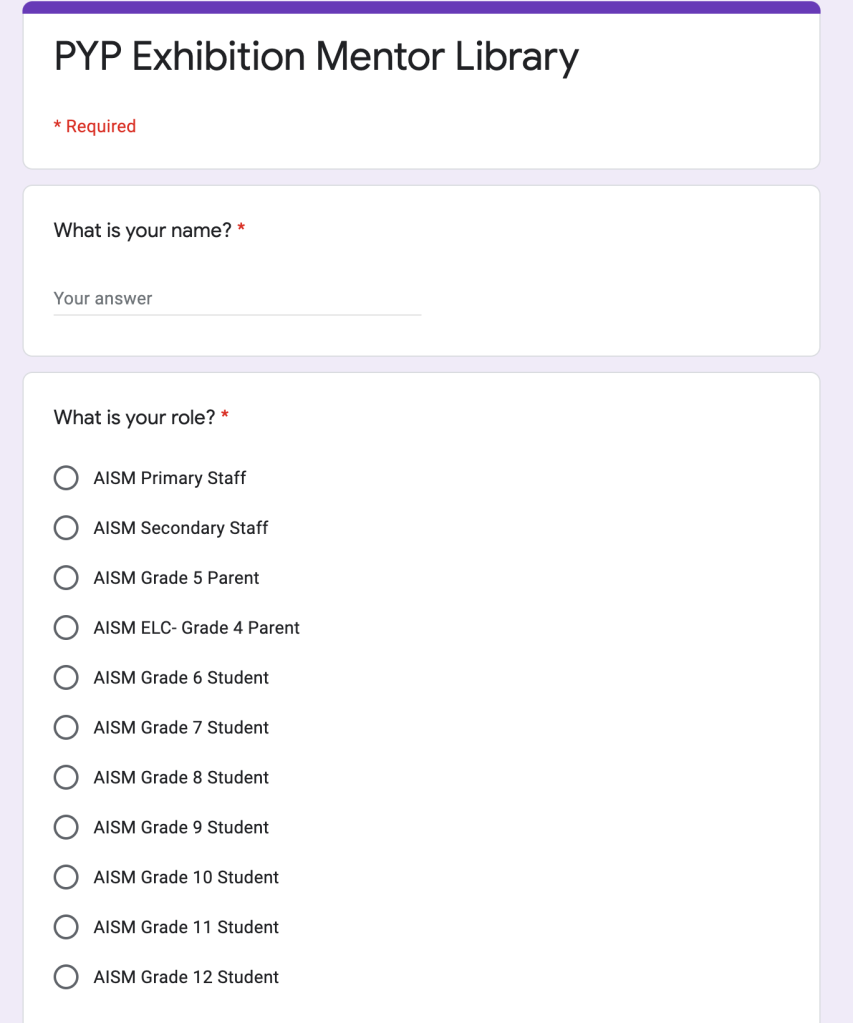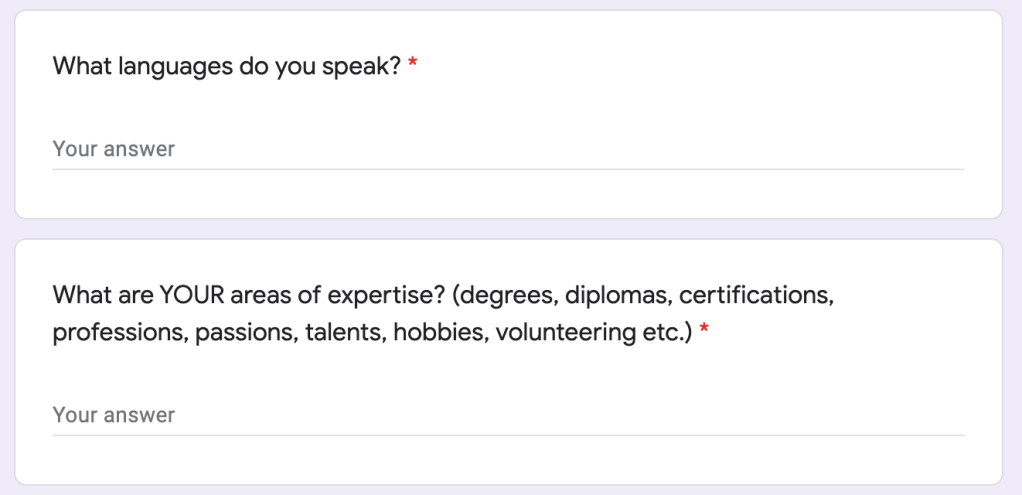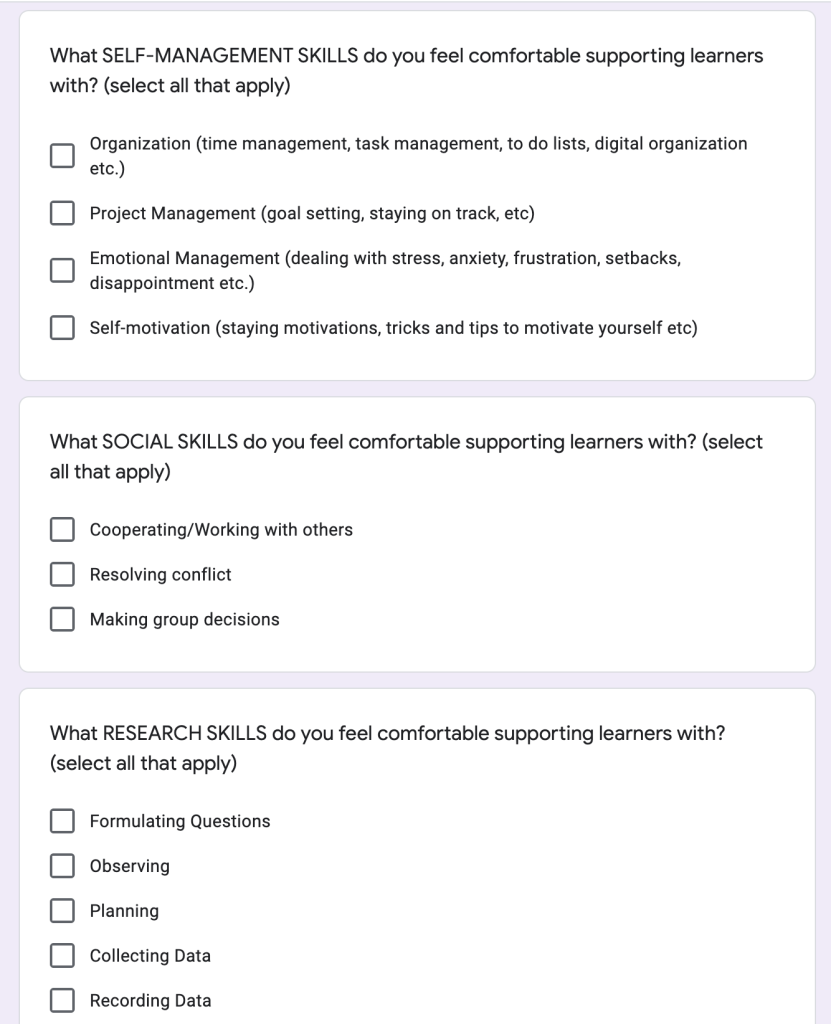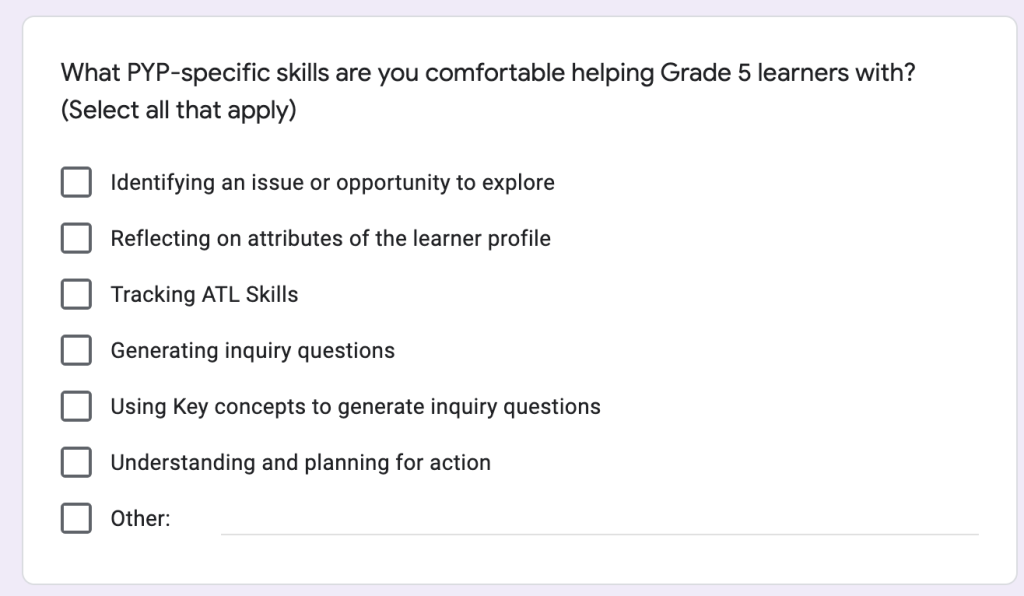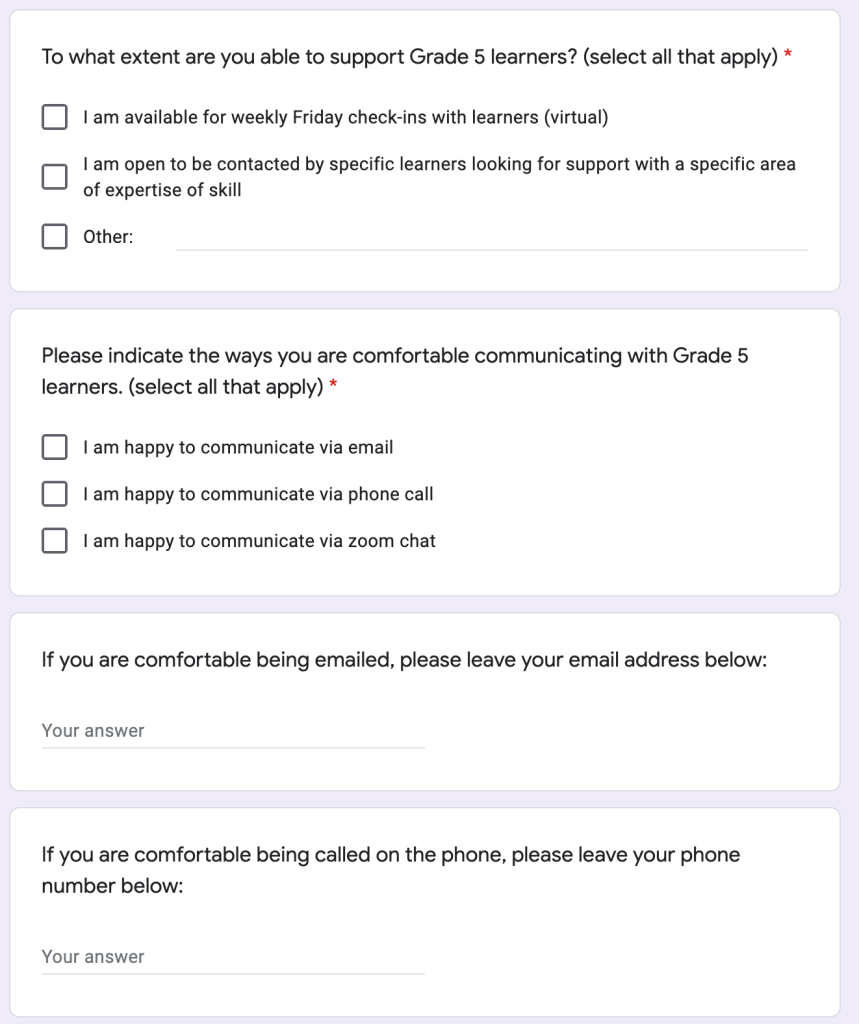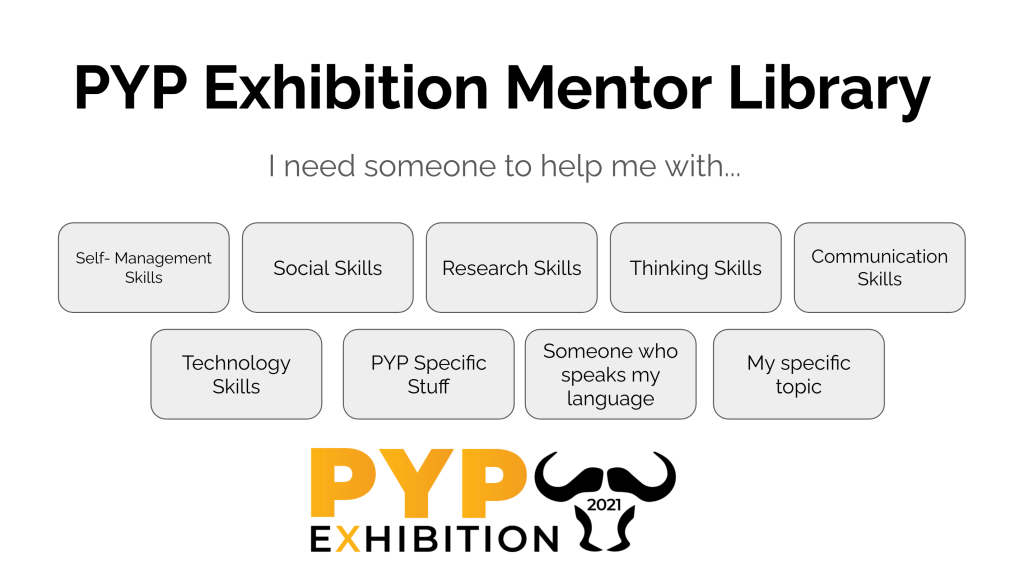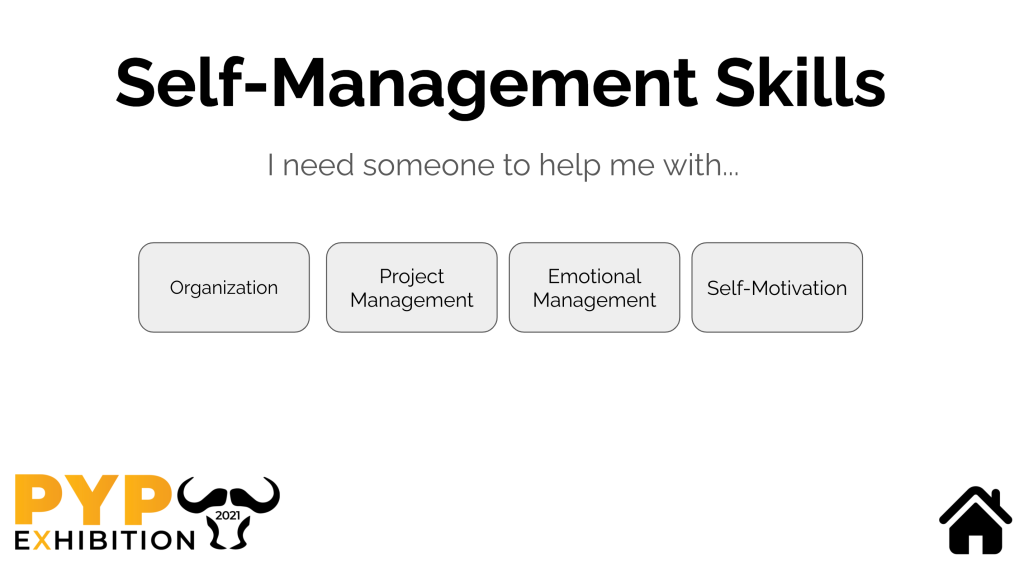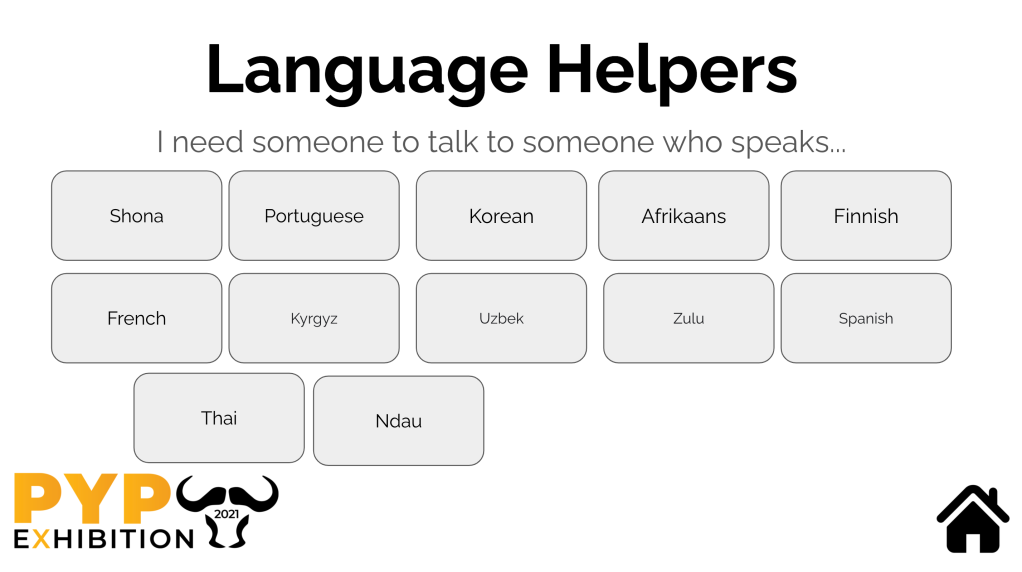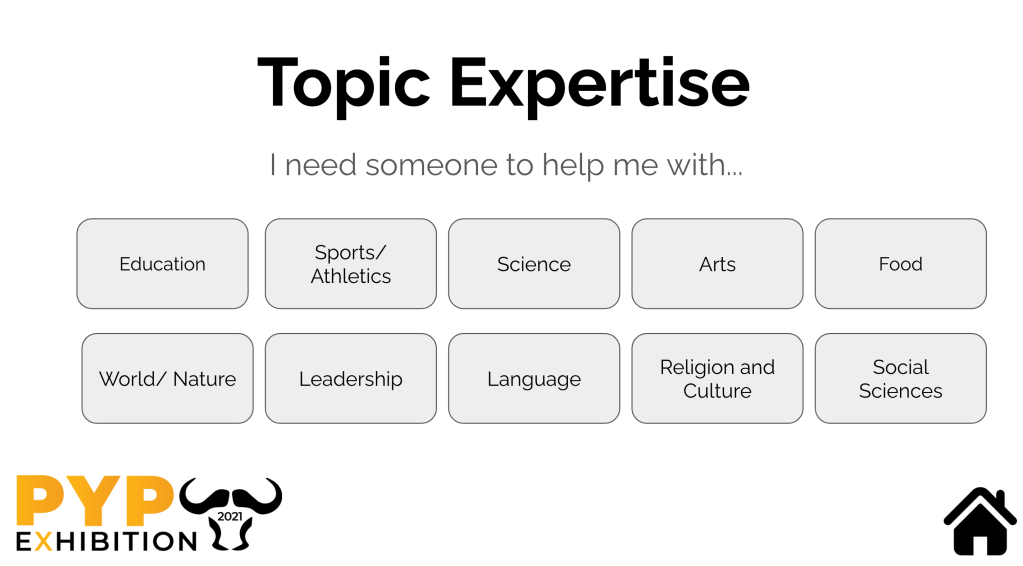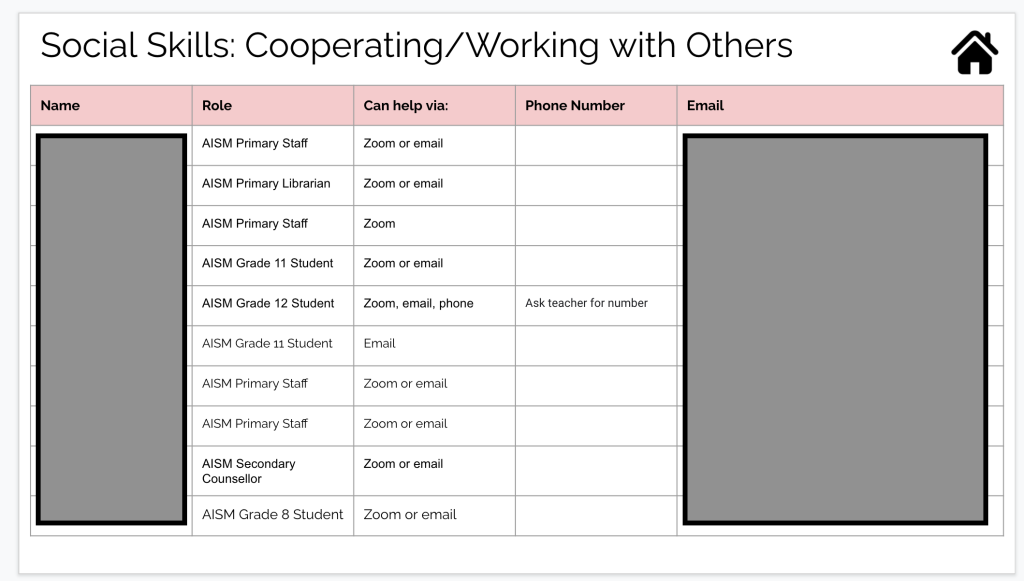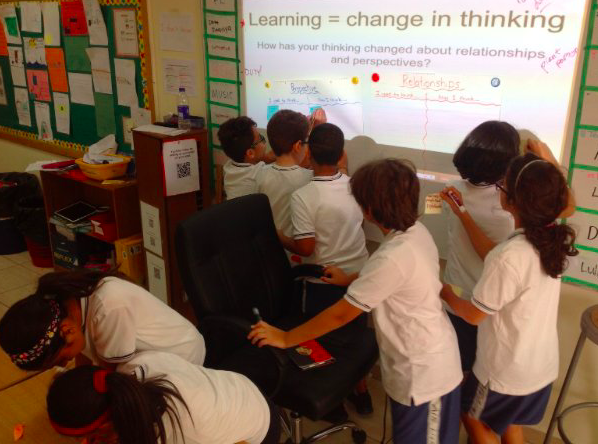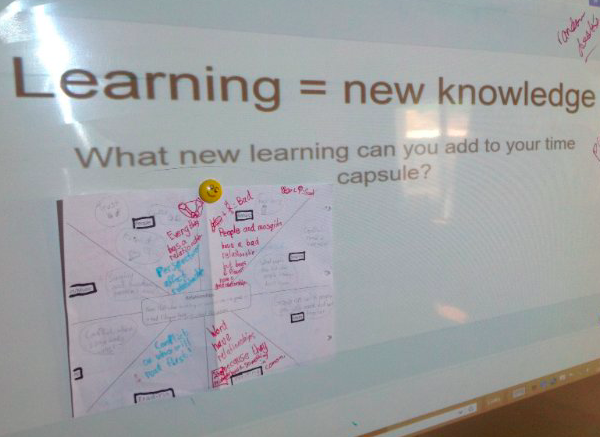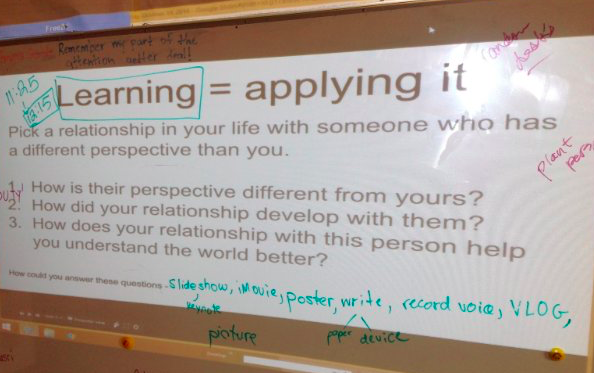This year as we gear up for PYPx 2021, we have been dedicating a lot of time to reimagining the role of “mentors”. We have been thinking about “mentor” as a noun – traditionally a person statically assigned to an individual or group for the entire Exhibition process. And we have been thinking of “mentoring” as a verb – connecting with that just-right person, at that just-right time to help with that just-right thing!
We are not alone in these conversations, many PYP practitioners and schools around the world have also been reimagining what support looks like for learners throughout exhibition. Some posts that provoked our thinking on the matter include:
- Authentic Collaboration in PYPx
- Redefining Collaboration in the PYP Exhibition
- Breaking the mould of PYPx
- We are the champions
- Personalized Units of Inquiry
We got to a stage in our planning where we decided this was going to be the year we said goodbye to a static, pre-assigned mentors and instead, be risk-takers, to figure out how we can embrace a more organic, responsive, personalized approach to “mentoring” learners through their Exhibition journey. We felt that the shift from “forced help” to “found help” was a more life-worthy learning experience and that learning how to “gather” support, intentionally and purposefully, as opposed to being simple “given” support would help them grow the most.
So, we decided to build a PYP Exhibition Human Library… and because of the unique context of not knowing whether we will be on campus or learning from home – or a mixture of both – we decided to set it up as a digital database. We also decided to open it up not only to faculty and staff at our school, but also parents and older students. Anyone who might have something to offer to the learners along the way.
First we collected the data: We used a simple Google Form, which allowed us to…
collect information about who they are in the community
… languages and areas of expertise
…specific Approaches to Learning Skills they would feel comfortable helping the Grade 5 learners with
… any of the PYP-ish stuff that supports the Exhibition journey
… and details about the extent to which they are able to support and how best for learners to contact them.
Next we collated the data: We decided to use Google Slides to harness the capability of internal links to allow for smooth and independent self-navigation for the learners.
The first slide acts as a table of contents to allow learners to self-identify in what area they require support
From there they are taken to a sub menu, that either breaks down the skills…
or the languages…
Or the specific topics…
Any of those sections then lead to a list of people to help and contact details for arranging the desired support.
Now that the library is built we are at the stage of thinking through the systems and processes to support the use of this tool:
- ensuring balance of who learners contact
- coaching learners to look for a mentor when they struggling, facing a challenging, or wanting some feedback
- contact expectations (CCing their homeroom teachers on email communication)
- zoom protocols (ie going through the homeroom teacher’s account) to ensure child safeguarding
Once these things are fine tuned, we will be ready to put this Human Library in the hands of the learners in hopes that they are able to use it to find the right people, at the right time, to help in just the right way!
Wish us luck! We will report back about how it goes!
